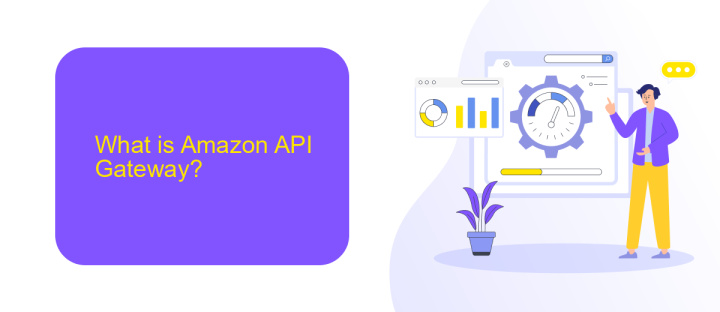Amazon Api Gateway Vs Lambda
When building scalable and efficient serverless applications on AWS, two essential services often come into play: Amazon API Gateway and AWS Lambda. While both are powerful on their own, understanding their distinct roles and how they complement each other can unlock the full potential of your cloud infrastructure. This article delves into the differences and synergies between Amazon API Gateway and AWS Lambda.
Introduction
Amazon API Gateway and AWS Lambda are two powerful services offered by Amazon Web Services (AWS) that enable developers to create robust, scalable applications. API Gateway acts as a front door for applications to access data, business logic, or functionality from backend services, while Lambda allows you to run code without provisioning or managing servers.
- Amazon API Gateway: A fully managed service for creating, publishing, maintaining, monitoring, and securing APIs.
- AWS Lambda: A serverless compute service that runs your code in response to events and automatically manages the underlying compute resources.
Integrating these services can significantly streamline your development process. Tools like ApiX-Drive can further simplify the integration, allowing seamless data transfer and automation between various applications. Whether you're building a simple microservice or a complex, multi-tier application, understanding the capabilities and use cases of API Gateway and Lambda is crucial for leveraging their full potential.
What is Amazon API Gateway?

Amazon API Gateway is a fully managed service that allows developers to create, publish, maintain, monitor, and secure APIs at any scale. It acts as a "front door" for applications to access data, business logic, or functionality from your backend services, such as applications running on Amazon EC2, code running on AWS Lambda, or any web application. With API Gateway, you can create RESTful APIs and WebSocket APIs that enable real-time two-way communication applications.
One of the key features of Amazon API Gateway is its ability to handle all the tasks associated with accepting and processing up to hundreds of thousands of concurrent API calls, including traffic management, authorization and access control, monitoring, and API version management. For seamless integration and automation, services like ApiX-Drive can be used to connect API Gateway with other applications, ensuring smooth data flow and operational efficiency. This makes it easier for developers to focus on the core functionality of their applications without worrying about the underlying infrastructure.
What is AWS Lambda?

AWS Lambda is a serverless computing service provided by Amazon Web Services (AWS). It allows developers to run code without provisioning or managing servers, making it an ideal solution for building scalable applications. With AWS Lambda, you only pay for the compute time you consume, which can lead to significant cost savings.
- Upload your code as a ZIP file or container image to AWS Lambda.
- Configure the function's trigger, such as an API Gateway endpoint, S3 bucket event, or DynamoDB stream.
- Lambda automatically scales your application by running the code in response to each trigger.
Using AWS Lambda simplifies the process of integrating various AWS services and third-party applications. For instance, if you need to automate workflows between different services, tools like ApiX-Drive can help streamline these integrations. This makes AWS Lambda a versatile and powerful tool for modern cloud-based applications.
Comparison of Amazon API Gateway and AWS Lambda

Amazon API Gateway and AWS Lambda are two essential services offered by AWS that often work together to create powerful, serverless applications. While they complement each other, they serve distinct roles in the architecture of cloud applications.
API Gateway acts as a front door for applications to access data, business logic, or functionality from backend services. It provides a way to create, publish, maintain, monitor, and secure APIs at any scale. AWS Lambda, on the other hand, is a compute service that lets you run code without provisioning or managing servers. It automatically scales your application by running code in response to triggers such as HTTP requests, changes in data, or system events.
- API Gateway: Manages API traffic, handles authorization and access control, and provides monitoring and analytics.
- AWS Lambda: Executes backend logic, scales automatically, and charges only for the compute time consumed.
When combined, these services enable developers to build and deploy scalable and efficient serverless applications. For those looking to streamline the integration process between various APIs and services, tools like ApiX-Drive can be invaluable. ApiX-Drive simplifies the setup and management of these integrations, enhancing the overall development experience.
Conclusion
In conclusion, both Amazon API Gateway and AWS Lambda offer robust solutions for building and managing serverless applications. API Gateway excels in handling and routing HTTP requests, providing a seamless interface for creating RESTful APIs. On the other hand, AWS Lambda shines in executing backend logic with its event-driven architecture, allowing developers to focus on writing code without worrying about server management.
Ultimately, the choice between API Gateway and Lambda depends on your specific use case. If your primary need is to manage API endpoints and handle various HTTP methods, API Gateway is the go-to service. However, if you require scalable, event-driven processing, Lambda is the ideal choice. For businesses looking to streamline integrations between these services, tools like ApiX-Drive can simplify the process, ensuring seamless data flow and efficient operation. By leveraging the strengths of both services, you can build highly scalable, cost-effective, and performant applications.
FAQ
What is the primary function of Amazon API Gateway?
How does AWS Lambda differ from Amazon API Gateway?
Can Amazon API Gateway and AWS Lambda be used together?
What are some common use cases for Amazon API Gateway?
Are there tools that can help with the automation and integration of API Gateway and Lambda?
Time is the most valuable resource in today's business realities. By eliminating the routine from work processes, you will get more opportunities to implement the most daring plans and ideas. Choose – you can continue to waste time, money and nerves on inefficient solutions, or you can use ApiX-Drive, automating work processes and achieving results with minimal investment of money, effort and human resources.

